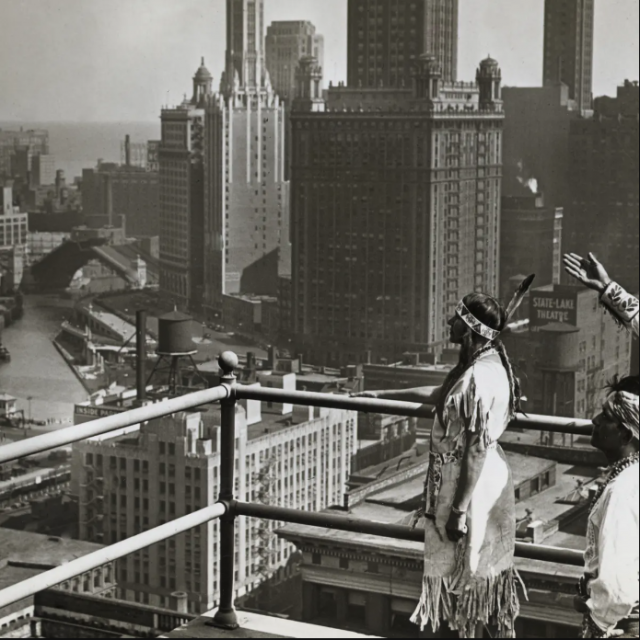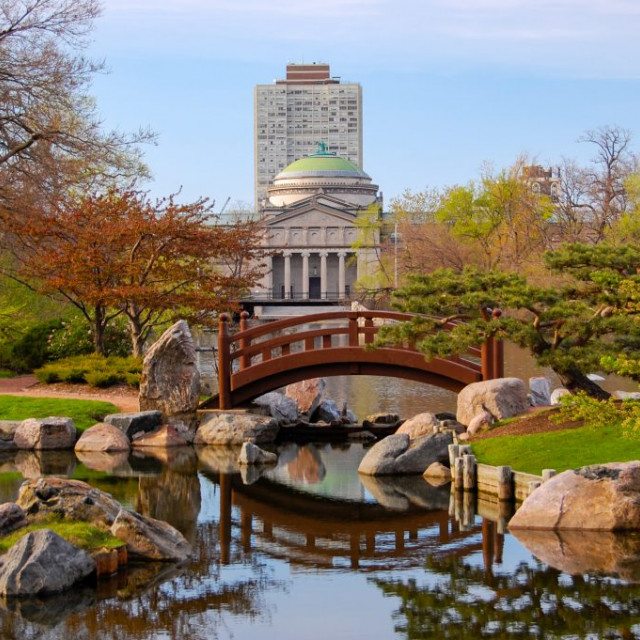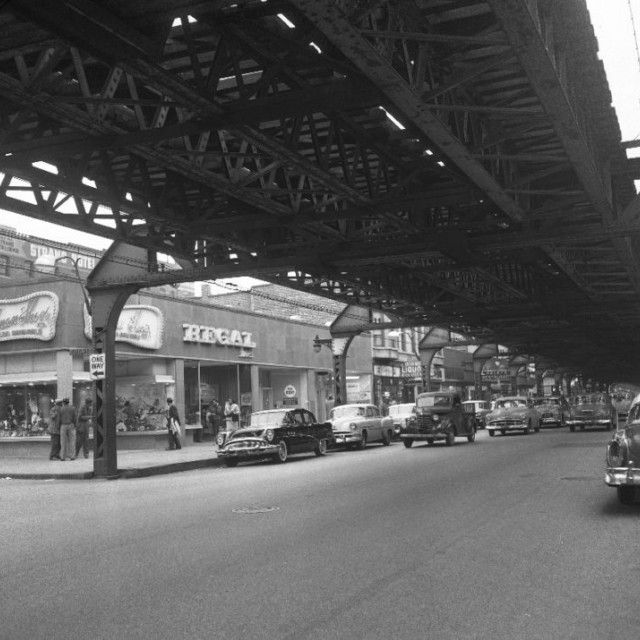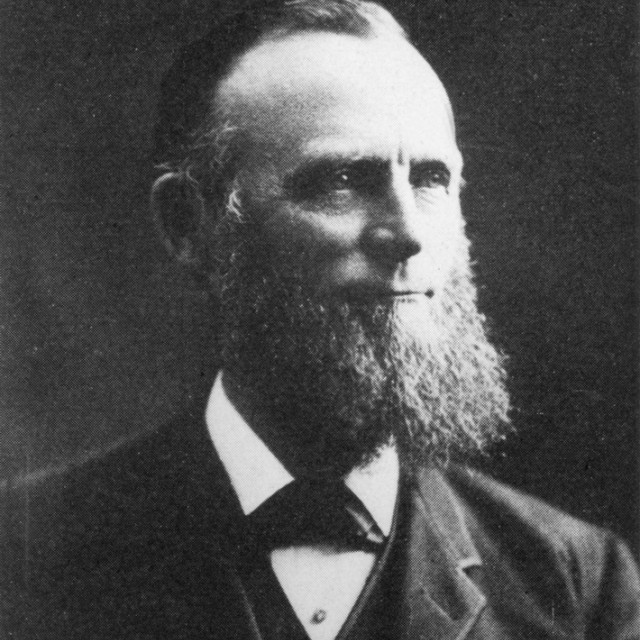
Tours
"UChicago in Context"
Developed and led by Chicago Studies' staff, "UChicago in Context" is a walking tour of the areas surrounding campus (Hyde Park/Kenwood, Jackson Park, Woodlawn, Washington Park). While reflecting on local sites, the tour introduces participants to historic and present-day issues that have shaped the city as a whole, and asks critical questions about how these have affected (and been affected by) the University of Chicago. The tour is approximately 4 miles and takes 2 hours, but can be extended, shortened, and/or divided by topic (see below).
Quick Links
Hyde Park Township
Boyer, John W. The University of Chicago: A History. Dean Boyer's encyclopedic history of the University includes a lengthy section on the founding of Hyde Park, the Old University of Chicago, and the various personalities involved in the establishment of the second University.
Jordan, Caine et al. "A Case for Reparations at the University of Chicago." First published in the blog "Black Perspectives," this document has been influential in challenging the University's established founding narrative and highlighting its connections to Stephen A. Douglas.
Spiegel, Nancy et al. "A Case for Reparations at the University of Chicago: Sources." This digital exhibit was the companion to a Special Collections exhibition prepared to provide primary source context for the argument over reparations.
Image: Paul Cornell, founder of Hyde Park Township

Urban Renewal in Hyde Park
Hirsch, Arnold R. Making the Second Ghetto: Race & Housing in Chicago 1940-1960. Hirsch lays out both the history of UChicago's attempts to "conserve" the Hyde Park/Kenwood neighborhood in ch. 5, but the book as a whole places these efforts in their citywide context.
Chicago Public Library. "Chicago Department of Urban Renewal Records: Photographic Negatives Digital Collection." These 16,000 digital images document the city's work to address the problem of "blight." Includes 1,223 images taken in Hyde Park/Kenwood.
Loeb, Marc. "Building a Selective Permeability of Space - Urban Renewal and The University of Chicago Campus Shuttle System." This diligently researched 2021 BA interprets a seemingly innocent innovation -- the shuttle bus -- as expressive of UChicago's larger urban planning motives.
Image: E. 55th St. as seen from the Illinois Central Railroad, ca. 1950

Chicago's First Nations
Duke, Jesse. "Without Native Americans, Would We Have Chicago As We Know It?" is a digital exhibition prepared as companion to an episode of WBEZ's Curious City (available to stream on the homepage).
Scharf, Alfred. "Indian Trails and Villages of Chicago and of Cook, DuPage, and Will Counties" attempted to document knowledge that was already 100 years old by the time Scharf drew his map in 1901.
Chicago's American Indian Center (the oldest of its kind) is an intertribal community center dedicated to the preservation of Native American culture in the midwest.
The Citizen Potawatomi Cultural Heritage Center focuses on the culture and history of the Potawatomi, one of the three tribes of the Council of the Three Fires upon whose un-ceded lands Chicago sits.
Photo: Native visitors to Chicago, ca. 1920

A City on Fire: 19th Century Chicago
Cronon, William. Nature's Metropolis: Chicago and the Great West offers a sweeping analysis of the natural and built environment forces that made Chicago the linchpin of 19th C. western expansion.
Egan, Dan. The Death and Life of the Great Lakes is a journalistic account of 21st C. challenges facing the Great Lakes as a result of human decisions made in the previous two centuries.
Smith, Carl. Chicago’s Great Fire: The Destruction and Resurrection of an Iconic American City tells the story, not only of the disaster, but also of the decades of recovery and growth that reshaped the city in its wake.
"Chicago Stories: The Union Stockyards" is an interactive resource about Chicago's Union Stockyards, which earned Chicago the name "hog butcher to the world."
Image: Currier & Ives postcard depicting Chicago, ca. 1865

Jackson Park and the 1893 World's Fair
Bachrach, Julia. The City in a Garden: A History of Chicago's Parks. Written in collaboration with the Chicago Park District, this book leverages unprecedented access to archival materials to uncover the system's history.
Larsen, Eric. The Devil in the White City: Murder, Magic, and Madness at the Fair that Changed America. This NYT #1 bestseller compellingly recounts the history of the 1893 World's Fair, including its darker aspects.
McClendon, Dennis. "World's Columbian Exhibition Site Today." McClendon, curator of Chicago in Maps, overlays the plan of the World's Fair on today's Jackson Park.
Wells, Ida B. et al. "The Reason Why the Colored American is Not in the World's Columbian Exposition." Wells and her famous co-authors carefully lay out the racist assumptions underlying the World's Fair's exhibitions.
Image: Jackson Park and the former Fine Arts Building

Cycles of Conflict in Woodlawn
Rothstein, Richard. The Color of Law: A Forgotten History of how our Government Segregated America. Rothstein regularly considers Chicago examples in great detail, including the history of Woodlawn.
Hansberry, Lorraine. A Raisin in the Sun. This award-winning 1959 play is based in part on the experiences of Hansberry's own family, who advocated for housing rights in Woodlawn.
Brazier, Arthur. Black Self-Determination: The Story of The Woodlawn Organization. This chapter from Bishop Brazier's out-of-print memoir deals with organizing against the South Campus expansion.
The Obama Community Benefits Agreement Coalition's current conflict with the Obama Foundation echoes previous development struggles in Woodlawn.
